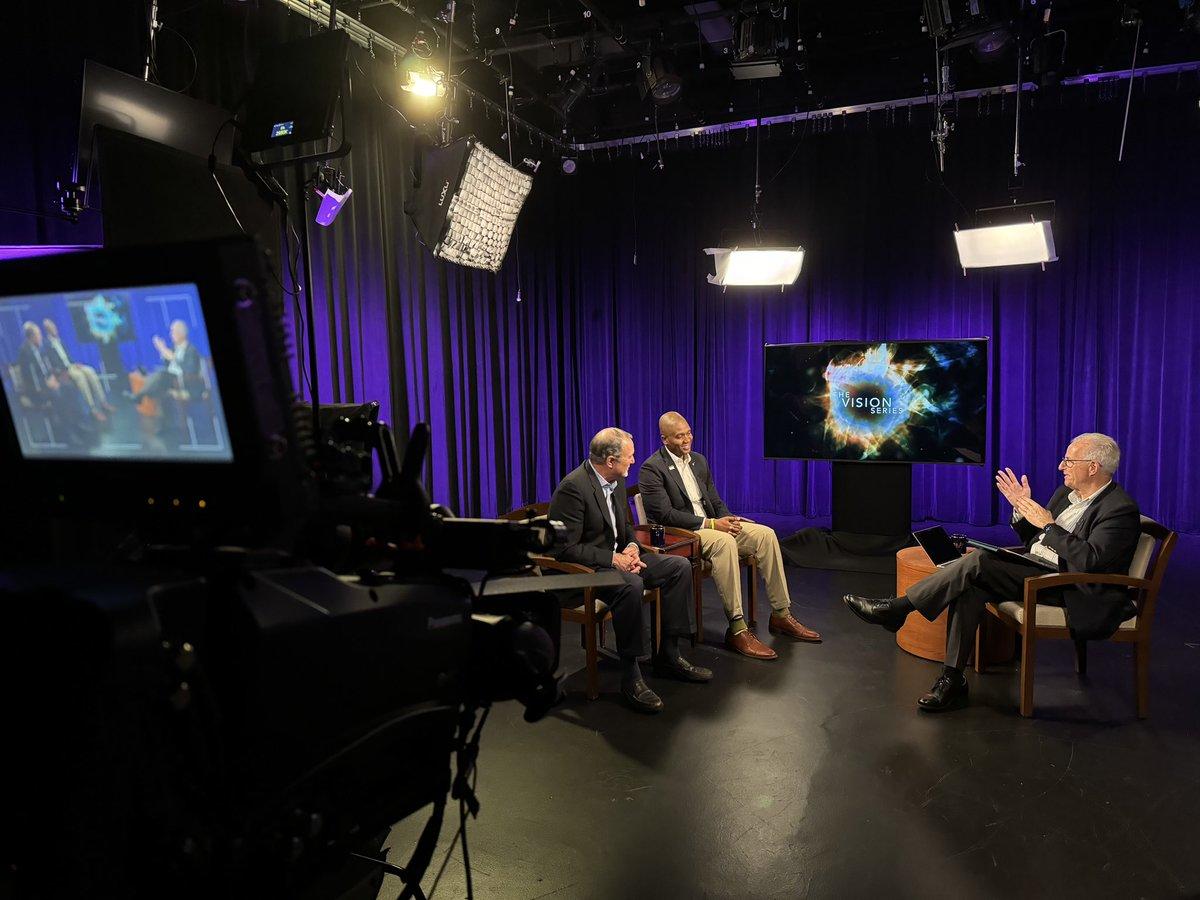
The advent of name, image and likeness (NIL) deals has been a game-changer, but George Mason University officials like their chances of successfully navigating a fast-changing collegiate sports landscape.
“At a place like George Mason that might not have the same resources as a Power 5 school, there are other variables like coaching, culture, etc.,” said Marvin Lewis, Mason’s assistant vice president and director of Intercollegiate Athletics. “We have to focus on that because there’s always another school with a little bit more money in the NIL space, a little bit more resources. But, if you can develop that personal relationship, get a kid to really buy into our value proposition, hopefully, they won’t make that change.”
Lewis appeared with former college basketball coach Craig Esherick on the Mason Vision Series to discuss “The New Business of College Sports: Changes Shaking the Foundation of Intercollegiate Athletics.” Go here to watch the discussion.
Outgoing Mason Provost Mark Ginsberg hosted the hour-long discussion on GMU-TV that also delved into the transfer portal, soaring coaching salaries, the growing importance of television revenues in conference realignment, and the ongoing facilities arms race in major college sports.
NIL deals weren’t intended as a recruiting tool, but that’s been the unintended consequence, Lewis said. Wealthier schools have begun forming powerful collectives—groups of wealthy donors and boosters who come together to provide more NIL opportunities—to make their preferred school more attractive to potential student-athletes, Lewis said.
As a result, the chasm between the haves and the have-nots is increasing daily.
“That’s the challenge,” said Lewis, a former four-year basketball starter and team captain at Georgia Tech who helped lead the Yellow Jackets to the 2004 national championship game.
Esherick, now an associate professor of sport management within the College of Education and Human Development, spent more than 17 years as an assistant basketball coach at Georgetown before leading the Hoyas for five years. He also served as an assistant coach on the USA Olympic Team that competed in the 1988 Seoul Olympics.
He and Lewis agreed that a coach’s relationship with their players, a positive culture within the locker room, and a positive educational and social experience are draws for student-athletes.
“If you have a personal relationship with all your players and if the experience you can control is a healthy one with your players,” Esherick said, “most of them are not going to want to leave.”
Marvin Lewis can be reached at admason@gmu.edu.
Craig Esherick can be reached at cesheric@gmu.edu.
For more information, contact John Hollis at jhollis2@gmu.edu.
About George Mason University
George Mason University is Virginia’s largest public research university. Located near Washington, D.C., Mason enrolls more than 40,000 students from 130 countries and all 50 states. Mason has grown rapidly over the past half-century and is recognized for its innovation and entrepreneurship, remarkable diversity, and commitment to accessibility. In 2023, the university launched Mason Now: Power the Possible, a one-billion-dollar comprehensive campaign to support student success, research, innovation, community, and sustainability. www.gmu.edu.
